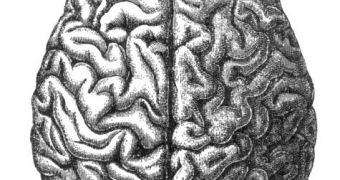The human brain's plasticity – its property of actually changing its internal structure in order to match the way we use it – is well known among experts in the field, but, now, they've also discovered that the circuitry in the cortices is changed by our past experiences. That is to say, when we are confronted with a situation that is not very clear, or of which we have insufficient information to make a clear decision, the experiences we lived in the past jump to mind and help the brain categorize the situation and to also find a resolve for complex dilemmas.
One of the main tasks that the brain has to perform on a regular basis is to assign meaning and clarifications to the sensory data it collects from our five senses (sight, smell, hearing, touch, and taste). But these data are naturally unclear and uncertain, and so the cortices involved in the process need to be on high alert at all times. Also very important, the expert say, is our ability to discern between visual stimuli that look relatively the same, as, for instance, when trying to spot someone in a crowd.
“What we have found is that learning from past experience actually rewires our brains so that we can categorize the things we are looking at, and respond appropriately to them in any context,” the lead researcher of the new study, University of Birmingham expert Dr. Zoe Kourtzi, explains. A scientific paper detailing the finds was published in the May 13th issue of the journal Neuron.
“We have shown that this learning process is not just a matter of learning the structure of the physical world – when I look at something I'm not just playing a game of 'snap' in my head where I try to match images to each other. In fact, areas in our brains are actually trained to learn the rules that determine the way we interpret sensory information,” the scientist says. For their study, the UB experts enlisted a number of volunteers, which they then asked to watch a series of highly similar visual stimuli. During the tests, they analyzed the behavior and the chemical signals that went on through the participants' heads, in a bid to determine how they assigned each of the stimuli they saw to a different category.
Surprisingly, the volunteers used two rules to assign objects to categories, but, under one rule, an object could exist only in one category, whereas, under the “back-up” one, the object could exist in the other as well. “This flexible learning paradigm allowed us to test for brain changes related to the perceived rather than the physical similarity between visual patterns. Our use of brain imaging in combination with mathematical techniques enabled us to extract sensitive information about brain signals that reflected the participant's choice,” Dr. Kourtzi adds.
“What we've shown is that we don't just get better at the task of picking out a familiar face amongst a crowd, for example. Our results tell us that previous experience can train circuits in our brains to recognize perceived categories rather than simply the physical similarity between visual patterns. Based on what we found, we propose that learned information about categories is actually retained in brain circuits in the posterior areas of the brain. From there, we think it is fed through to circuits in frontal areas that translate this information into flexible decisions and appropriate actions depending on the requirements and context of the task,” the expert concludes.

 14 DAY TRIAL //
14 DAY TRIAL //